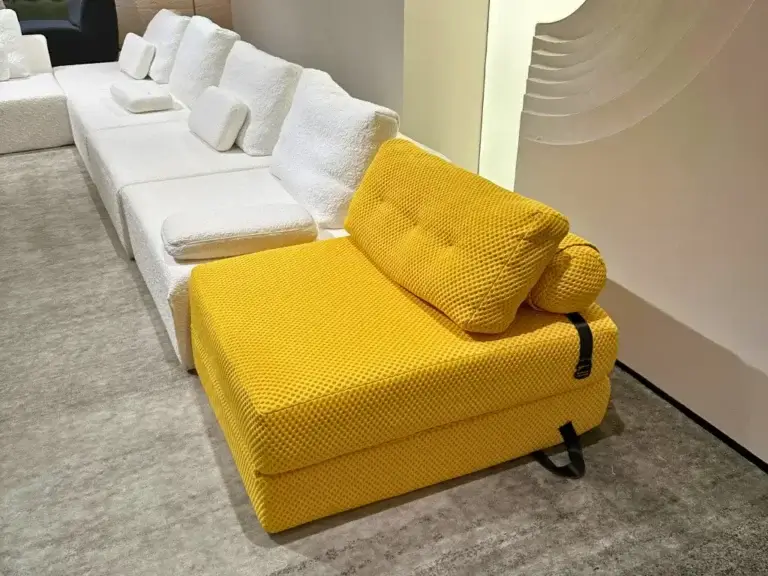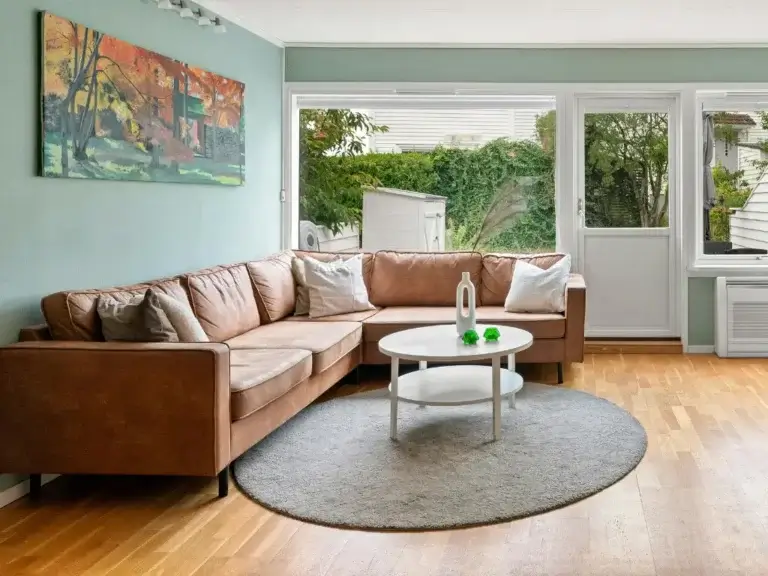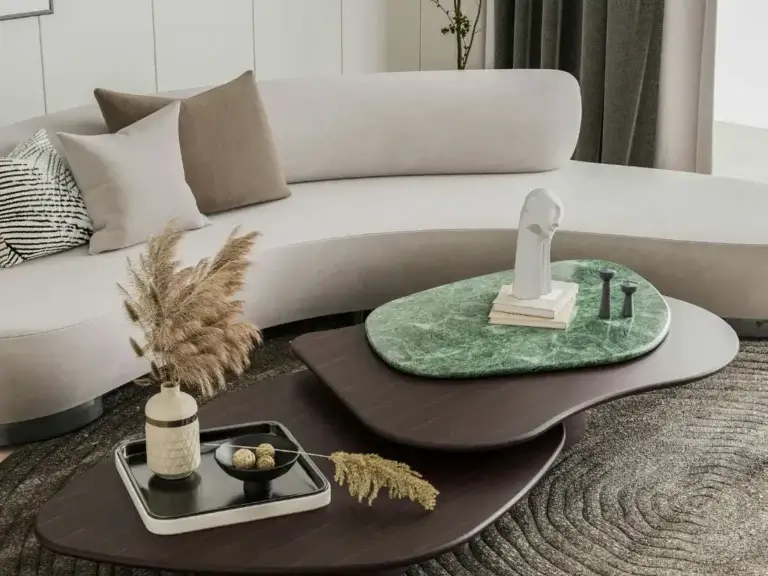5 Simple Steps to Achieve a Minimalist Living Room Design

Creating a minimalist living room is more than just tidying up; it’s about curating a serene, practical, and stylish space.
Picture yourself stepping into a room where every piece serves a purpose. Designers favor sleek furniture and well-chosen decor, crafting a space that feels both open and invigorating.
This guide will empower you with five straightforward steps to transform your living room into a serene minimalist sanctuary. We will explore the elegance of neutral colors, functional furniture, natural light, and the strategic use of negative space. Let’s create your ideal retreat!
Step 1: Declutter Your Minimalist Living Room Set for a Fresh Start

Begin your minimalist journey by decluttering. This crucial step involves removing any items that create visual clutter. Assess your living room and categorize objects into three groups: keep, donate, and discard. Retain only those essentials—furniture, decorations, and functional elements that serve a purpose or spark joy.
Decluttering not only frees up physical space but also brings mental clarity. A tidy room with reduced distractions perfectly embodies the minimalist principle of simplicity and intentionality. Starting fresh lets you visualize how your space can transform into a calming and functional area.
Step 2: Choose Functional Furniture for Your Minimalist Living Area
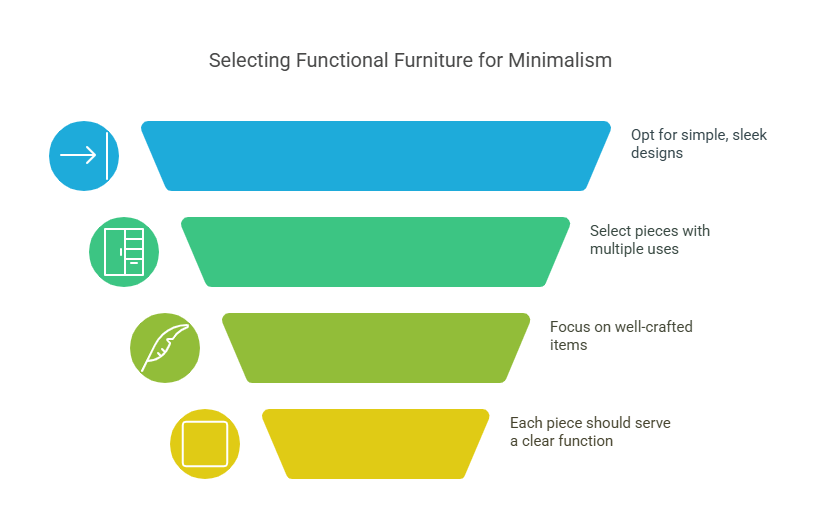
Furniture defines the aesthetic and functionality of your minimalist living area. Opt for pieces with clean lines and simple designs that embody the minimalist ethos. Multi-functional furniture—like storage ottomans or modular sofas—is ideal for optimizing utility without overcrowding the space.
Focus on quality over quantity by selecting fewer, expertly crafted items that stand the test of time. A straightforward coffee table or a simple sofa can anchor your living area while maintaining a tidy appearance. Remember, each piece should serve a clear purpose—providing comfort, storage, or enhancing the overall design.
Step 3: Embrace Neutral Tones in a Minimalist Lounge Room
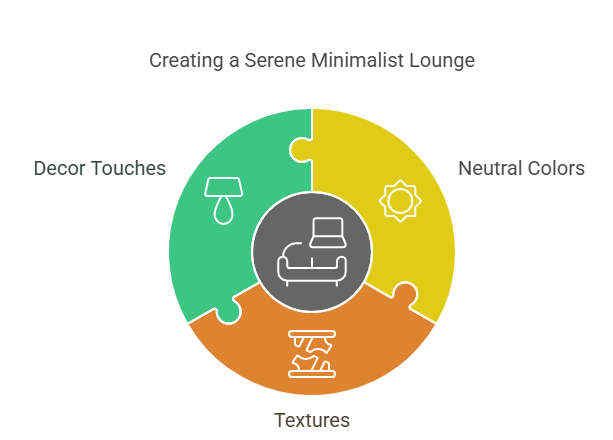
Neutral colors are the cornerstone of a minimalist lounge room. Shades like white, beige, gray, and soft pastels instill a sense of calm and openness. These hues effectively reflect natural light, making the room appear larger and inviting.
To add depth, incorporate varied textures. Consider wooden furnishings, stone details, or lush fabrics, such as wool rugs or curtains.
Neutral tones offer a versatile backdrop for gentle decor touches like abstract artwork or greenery. By embracing this palette, you align with the minimalist’s serene ambiance.
Step 4: Maximize Natural Light in Your Minimalist Lounge

Natural light enhances the airy feel of a minimalist lounge. Large windows adorned with light or unadorned curtains allow sunlight to pour in, accentuating the design’s simplicity and elegance. If privacy is a concern, opt for translucent blinds that preserve light while ensuring privacy.
Mirrors can be a valuable tool, reflecting light throughout the room and creating an impression of spaciousness. Harnessing natural light reduces dependency on artificial lighting and imbues warmth into your minimalist living room.
Step 5: Incorporate Texture to Elevate Your Minimalist Living Space

Minimalism highlights simplicity, yet textures prevent your living space from feeling stark or cold. Layering different materials—like wood, leather, metal, or woven fabrics—adds visual intrigue without overwhelming the design. For instance, pair a smooth leather sofa with a chunky knit throw or place a jute rug beneath a sleek glass coffee table.
Textures infuse warmth into your minimalist living room while preserving its clean aesthetic. The key is balance—select understated textures that harmonize and align with the overarching theme of simplicity.
In conclusion, transforming your living space into a minimalist living room involves a thoughtful journey towards intentional simplicity. By following these five steps, you craft a tranquil and stylish environment.
Begin with organization, select functional furniture, opt for neutral hues, maximize natural light, and embrace varied textures.
If you aim for a minimalist home, these strategies can help you create a peaceful and uncluttered space. Remember, minimalism transcends aesthetics—it’s about fostering clarity and comfort. For more ideas, explore how minimalist lounge designs encourage living with less while enjoying more.

